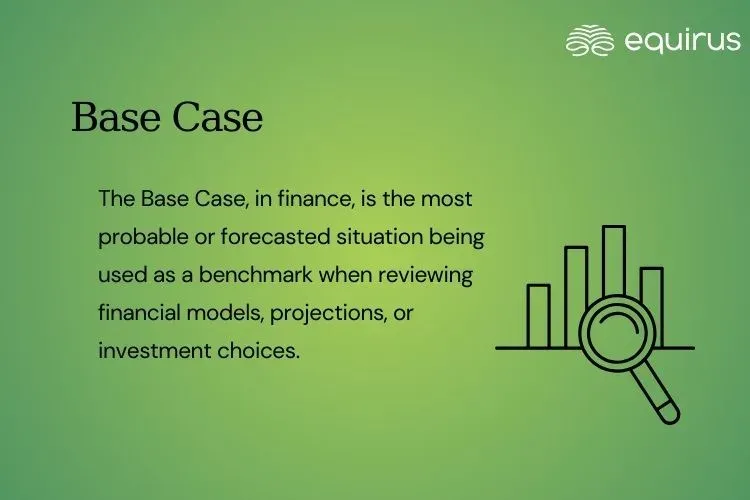Base Case

Key Highlights
-
The Base Case, in finance, is the most probable or forecasted situation being used as a benchmark when reviewing financial models, projections, or investment choices.
-
It is the typical set of assumptions regarding market conditions, growth rates, revenues, costs, and other material inputs.
What is a Base Case?
The Base Case, in finance, is the most probable or forecasted situation being used as a benchmark when reviewing financial models, projections, or investment choices. It is the typical set of assumptions regarding market conditions, growth rates, revenues, costs, and other material inputs.
Purpose of a Base Case
A base case is employed as a benchmark against which other scenarios can be compared, including:
- Best Case – if all goes better than anticipated.
- Worst Case – if all goes worse than anticipated.
This assists businesses and investors to evaluate risks, strategize, and make informed decisions.
Where is it Used?
-
Financial Modeling: Analysts prepare base case projections of revenues, profits, and cash flows using prevailing trends and rational assumptions.
-
Project Evaluation: Businesses utilize a base case to project the return from a new investment under ordinary circumstances.
-
Valuation Analysis: When a company is valued employing techniques such as DCF (Discounted Cash Flow), the base case becomes the most basic scenario.
Example
There is a business that wishes to introduce a new product. It assumes in the base case that:
10,000 units would be sold within the first year.
The selling price per unit is ₹500.
Marketing is ₹5 lakhs.
Based on these assumptions, it then computes projected profit. If it needs to simulate what if 15,000 units are sold or if the cost of marketing increases, those would fall under best/worst-case scenarios.
Why is it Important?
-
Offers a realistic expectation
-
Serves as a planning tool
-
Facilitates comparison of alternative outcomes
-
Assists in risk analysis and decision-making
